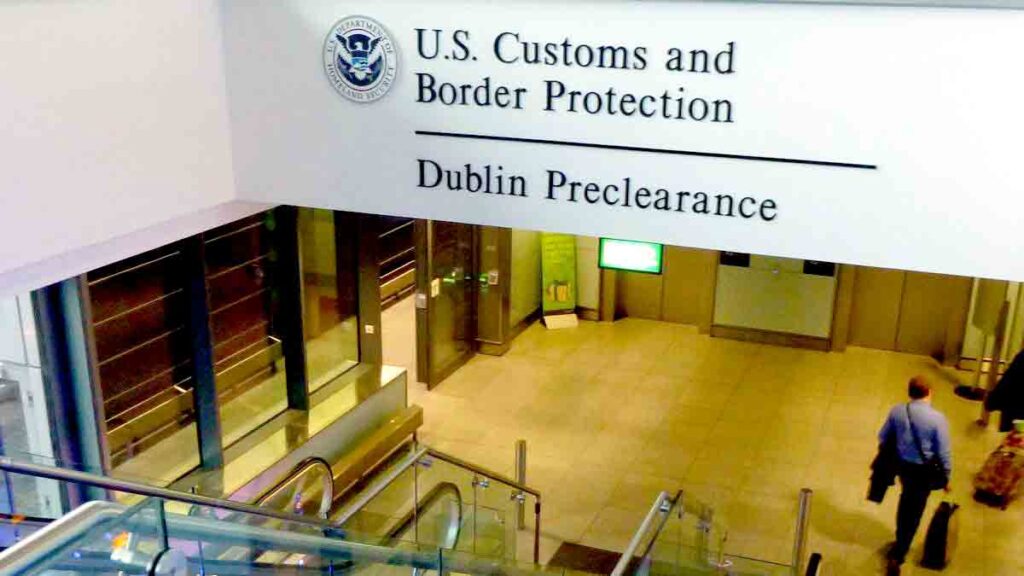
One of our earliest posts on HungryTravelers dealt with bringing food home from another country. It was mostly a cautionary tale about the many prohibitions back in 2009. But the rules at Customs and Border Control (CBP) have become much more nuanced in recent years, based more on state-of-the-art science and less on xenophobic suspicion of ‶unAmerican″ foods.
We’re still going to have a hard time bringing home Spanish jamón ibérico or Italian prosciutto and we’d never try smuggling Uncle Guido’s homemade country sausage, but the revised regulations are much friendlier. They are, however, far more detailed. Food that’s okay coming from some countries is prohibited if coming from some others. Moreover, the green-light and red-light lists change frequently.
Declare and present
The first thing to remember is that you need to declare all food items to Customs and Border Control when entering the U.S. It’s pretty impossible to hide food, and when it’s found it will be taken away from you. (And you thought those luggage-sniffing dogs were pet beagles….) Although civil fines can run up to $10,000, we’re told that it’s usually $300 for first-time offenders. Most of the time, unless the inspector suspects that you’re being intentionally devious, CBP staff simply confiscate the contraband.
Usually, the CBP agents (after passport control) will glance at the list and wave you through. A certain number of travelers are picked at random to open their suitcases and show their goods. Trained dogs or x-ray inspection might also flag some bags. And if you list ‶Uncle Guido’s country sausage″ on your declaration, chances are pretty good that CBP will want to see it. (And take it.)
First the good news

USDA regulations about cheeses have become a lot easier to understand. They used to specify a certain number of days of aging. Now the rule of thumb is that both hard and soft cheeses are fine, as long as they don’t contain meat or pour like a liquid. For example, ricotta and cottage cheese are still no-no’s, but you can bring a whole wheel of Parmigiano Reggiano (above, center) with you if you can handle one of those 50 kilogram wheels. Butter is also okay. If you’ve ever tried good European butter, you’ll find this good news indeed.
Dried herbs and spices are, by and large, okay. The only major exceptions are citrus leaves, since they can harbor fungus that could be detrimental to American crops. Bring all the saffron (above, left) you can afford. Coffee and tea are also allowed in, as long as you’re not passing through Puerto Rico or Hawaii on the way home. (Both places grow coffee and ban green coffee beans or plant material to avoid importing pests.) Nuts, dried fruit, and other dry goods are also acceptable, though some agents may balk at rice, especially from Asia or Australia. We’ve never had a problem with it.
Alcohol has never been much of a problem, though the U.S. did ban absinthe for many years. Now it’s allowed given a few strange provisos. It must be ‶thujone free.″ ‶Absinthe″ can’t be the brand name. And, per the government, ‶the artwork and/or graphics cannot project images of hallucinogenic, psychotropic or mind-altering effects.″ As always, you’ll pay duty if you exceed the allowed limits,
But some tasty stuff still can’t come through

The Travelers Tips section (https://www.aphis.usda.gov/aphis/resources/travelers-int) on the Animal and Plant Health Inspection Service (APHIS) on the U.S. Department of Agriculture web site should be your go-to guide on what is and isn’t allowed into the country. An amusing graphic on its front page states that ‶Pigs don’t fly. Let’s keep it that way.″ The point is that almost all pork products are banned unless imported commercially through a process that ensures their safety. In this case, safety has more to do with swine diseases than being safe to eat. Just as APHIS bans beef imports from countries with foot and mouth disease or mad cow disease, pork is banned to keep the American herds safe. That said, you can bring back fresh (chilled or frozen), cooked, cured, or dried meat from regions certified safe.
But you may have to prove it really comes from the safe region, which can require a lot of documentation. In practice, this means commercial packaging stating the country of origin. Dried and/or smoked hams are treated differently, though. While they are technically admissible, we’ve always had them confiscated because the regulations are so hazy.
Fresh fruits and vegetables are also banned. The logic is that they can harbor insects, fungi, and bacteria that attack plants grown stateside. The mid-1980s horror show of a Mediterranean fruitfly infestation resulting from one traveler’s illicit orange is cited as the reason for the bans. The feds and California authorities spent more than $100 million to get the Medfly under control.
The bottom line is that whatever the regulations say, the CBP agents have total discretion to allow food to enter the country or to keep it out. Be friendly and open. Good cheer never hurts, especially with workers who take abuse from passengers all day long.
